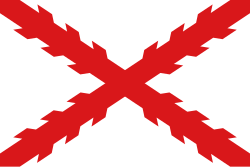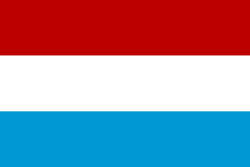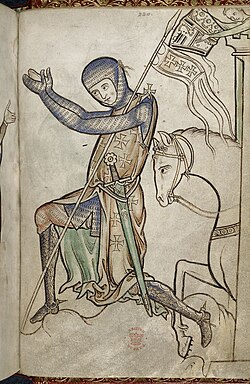Španělská Armada
| Invaze španělské Armady | |||
|---|---|---|---|
| konflikt: Anglo-španělská válka, Osmdesátiletá válka | |||
 Mapa tažení španělské armady | |||
| Trvání | červenec – srpen 1588 | ||
| Místo | Lamanšský průliv, Severní moře | ||
| Souřadnice | 50°10′ s. š., 4°15′42″ z. d. | ||
| Výsledek | anglicko-nizozemské vítězství | ||
| Strany | |||
| Velitelé | |||
| Síla | |||
| |||
| Ztráty | |||
| |||
| Některá data mohou pocházet z datové položky. | |||
Španělská Armada (španělsky Grande y Felicísima Armada, známá jako Armada Invencible; Velká a nejšťastlivější Armada, Neporazitelná Armada) byla flota, kterou nechal postavit habsburský král Filip II. Španělský pro invazi do Anglie. Filipa podpořil papež Sixtus V., který invazi považoval za křížovou výpravu.

Armada čítala na 130 lodí všeho druhu, vyzbrojených 1 500 kusy mosazných a 1 000 železných děl, její posádky tvořilo na 8 000 námořníků a 18 000 vojáků. Flota byla složená z 28 původních válečných lodí: 20 galeon, 4 galér a 4 galeas; zbytek loďstva sestával hlavně z vyzbrojených karak, hulků a lehkých lodí. Vydržování Armady stálo ročně kolem 4 milionů dukátů, což byla asi polovina Filipových ročních důchodů.[zdroj?]

28. května 1588 vyplula Armada pod vedením vévody de Medina-Sidonia z Lisabonu, když poslední loď opustila přístav až o dva dny později. Flota zamířila do kanálu La Manche, kde se měla spojit s armádou vévody Parmského, generála španělských vojsk v Nizozemí. Celé vojsko se pak mělo vylodit v Anglii.
Po prohrané bitvě u Gravelines byla Armada zahnána na sever a při návratu kolem skotských a irských břehů se setkala s řadou ničivých bouří. Do Španělska se vrátilo pouze 64 lodí a kolem 10 000 mužů.
Externí odkazy
 Obrázky, zvuky či videa k tématu Španělská armada na Wikimedia Commons
Obrázky, zvuky či videa k tématu Španělská armada na Wikimedia Commons - Drachinifel: The Spanish Armada - From its Origins to the Lizard (Part 1) na YouTube (anglicky)
- Drachinifel: The Spanish Armada - From the Lizard to the Rocks (Part 2) na YouTube (anglicky)
- Drachinifel: The Spanish Armada - The Food that Fueled the Fleets na YouTube (anglicky)
- Kings and Generals: Second and Third Spanish Armadas - Early Modern History na YouTube (anglicky)
Média použitá na této stránce
Autor: Ningyou., Licence: CC BY-SA 3.0
Flag with the cross of Burgundy (saltire). Also named Cross of Burgundy flag. It was used in the Catholic Monarchy and in its viceroyalties such as New Spain and Peru. It was also used by Spain as a military or king's prosonal flag. Used by the Carlist movement.
Flag of the Republic of the Seven United Netherlands (known as the Hollandsche Vlag or Statenvlag).
Replaced orange with red, please see this discussion on the German Wikipedia for more information.
Red_St_George's_Cross
Used by Archbishopric-Electorate of Trier 898–1794 (Erzbistum Trier)
A kneeling knight with his horse before setting off on the crusades. His servant leaning over the turret with his masters helmet.From the Westminster Psalter, BL Royal MS 2 A xxii f. 220
English ships and the Spanish Armada, August 1588.
The painting may have been a design for a tapestry, or if not is laid out like one, and is dateable to the years immediately following the event. The composition appears less like a painting than as a formal design in a mannered style but no other contemporary image of the Armada conveys a comparable sense of the drama and colour of the confrontation between the two fleets. Although it is not exactly clear which part of the battle is shown (if indeed it is literal at all), it is most likely to be the action of Gravelines, the only point at which large numbers of ships from both sides were engaged in sustained conflict. However, the emblematic foreground arrangement of a Spanish galleass flanked by two English warships suggests that the picture was intended primarily as a symbol of the Armada campaign as a whole - although it is a symbol edged with satire. The galleass flies the Papal banner and the arms of Spain but her complement includes a number of figures - many portrayed as sinister zealots - led by a preaching monk, and a death's head or skeleton in a jester's costume. This renders her a 'ship of fools', an image originated and popularized by Sebastian Brandt's illustrated moral fable, 'Das Narrenschiff', of 1494. In this case the quietly humorous anti-Catholic invective is heightened by a representation of a distraught Spaniard - perhaps meant for Phillip II or the Armada's commander, the Duke of Medina Sidonia - in a boat near the stern. Elsewhere monks disappear beneath the waves as the battle rages. The galleass may also be meant to represent the principal Spanish flagship, Medina Sidonia's 'San Martin', 48 guns, although by showing her as a galleass, when she was in fact a galleon, the artist has used poetic licence to emphasize her Spanish origin. To her right is a stern view of what is clearly intended as the 'Ark Royal', 55 guns, the flagship of the English Lord Admiral, Lord Howard of Effingham, flying the Elizabethan Royal Standard. On the left, bow on, is another English ship, perhaps Drake's vice-admiral's flagship, 'Revenge', 43 guns, although this is speculative. Beyond them the panel is filled with fighting and sinking vessels. The ships, particularly those in the foreground, are painted with care and some accuracy of detail. Generally the proportions of the hulls, masts and yards are credible for warships of this period. Like many English observers the artist was evidently impressed by the few galleasses in the Spanish fleet. There were in fact four which reached the Channel, all from Naples, though only two survived to reach safe harbour. The varied Spanish and English ships seen in the background include, in the far distance, one single-masted barge-like vessel, possibly of Dutch origin or at least an allusion to the Dutch Protestant 'sea beggars role in harrying the Armada in and after the battle off Gravelines.
oil on poplar panel
Measurements Frame: 1380 mm x 1700 mm x 110 mm; Painting: 1120 mm x 1435 mmFlag of Portugal (1578-1640).










